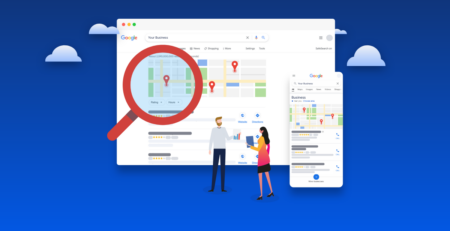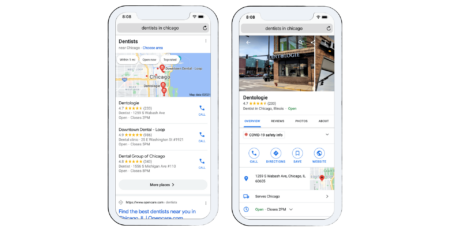In modern workplaces, workforces thrive on inclusivity/diversity. The element of diversity has not only become a crucial component to run any businesses but a necessity to flourish and better retention. Fostering an environment where every employee feels empowered, thrives and can tackle any unforeseen challenges.
To form such an environment, businesses must acknowledge gender equality and eradicate discrimination. Although biases, aggression and stereotypes continue in the majority of the workplaces, it is important for every business to take systematic steps to ensure everyone’s identity and voice are heard and respected.
Table of Contents
What defines an inclusive workplace?
An inclusive workplace goes beyond embracing equity. Creating an inclusive workplace requires a systematic approach where everyone ( despite being related from different ethnicities or backgrounds) should feel valued and empowered.
In the past, employees from different backgrounds or regions were used to facing many challenges to even provide their input in the meetings. Running a business with this mindset has left many companies lagged behind the market due to unequal treatment with their employees.
However, the shift in running a business to foster a more inclusive workforce has driven many businesses to success and given their employees a sense of belonging. It ensures that everyone is aligned and has equal opportunity to thrive and contribute their part.
According to McKinsey reports, more inclusive companies are more likely to outperform less diverse/inclusive workplaces on profitability.
Statistics About Inclusion and Diversity in 2024
- Research found that diverse workplaces see a 2.5x increase in cash flow per employee.
- Inclusive teams outperform others by 35% in productivity. Diversity and inclusion really pay off!
- Diverse teams perform 87% better when making decisions.
- Diverse management teams generate 19% more income.
- Women serve as CEOs in 6.6% of Fortune 500 businesses.
- According to a McKinsey analysis, increasing worker diversity may boost GDP by 26%.
- Inclusive businesses are 1.7 times more likely to innovate. (Joshua Bersin)
- Millennials are 83% more likely to be engaged at inclusive workplaces. (Deloitte)
What Are the Perks of an Inclusive Workplace for Business?
Inclusive workplaces thrives and outperforms and foster better collaborative environments for businesses. Some key benefits include:
Enhanced Employee Engagement
Creativity overflows when a company has a diverse workforce. It shows that inclusive workplaces have people with various ideas, concepts and work experiences. This fosters a collaborative working environment and is likely to grow more than non-inclusive workplaces.
When people from different backgrounds feel heard and valued, they like to engage more with the company. They don’t fear having their own thoughts presented on the table or feel ridiculed. Instead they feel more empowered because work becomes meaningful and satisfying for them.
As a result, it enhances employee engagement and improves the company’s overall performance.
Enhanced Creativity and Innovation
Diversity drives creativity in inclusive organizations. People with diverse origins contribute distinct viewpoints that question preconceptions, generate new ideas, and reveal blind spots.
This cross-pollination of information and experiences creates collective intelligence, allowing the finest ideas to come to the surface, resulting in ground-breaking solutions.
Improve Problem-Solving Skills
An inclusive team goes beyond fairness, it tackles challenges and strengthens problem-solving skills. Employees belonging to different backgrounds, possessing diverse experience might help share their level of understanding about the complexities. Their experience can spot hurdles that non-experiencers can’t figure out. Inspired by different backgrounds they might have different perspectives to see the problem.
It encourages a variety of viewpoints to highlight and identify the blind spot and offer solutions that wouldn’t have emerged.
Improved Brand Reputation
Today, the world has become socially conscious and advocates strong diversity and inclusion in workplaces. Companies leveraging this culture are more likely to outperform than those who are not promoting this. Nowadays, customers are more drawn to buy from a brand that reflects the values they hold important.
Not only this, investors are also recognizing companies who have a more inclusive approach. They realized the successful connection between diversity and financial soundness. It is important for companies to hire a diverse workforce to foster more creativity and innovation.
Key Ways to Create Inclusive Workplace
Amidst ongoing disruptions in technology, here are some key ways companies can create a more inclusive workplace culture
Involve Every Employee
First thing first, the key to evolve as an inclusive brand is to involve all employees in decision making and recognize each one’s efforts. Ensure that promoting this culture is a collective approach involving everyone in the company. For this, every employee should know their role and understand what company demands to foster a collaborative culture.
To accomplish this, set clear standards and expectations. Foster equity with respect and dignity. Let them speak their heart and mind and acknowledge their feedback in decision making. This way, they will be fearless in contributing to building an inclusive workplace.
Set a Leadership Tone
You might have heard this saying ‘lead from the front’. This is not restricted to athletes but equally resonates to corporate leaders. Senior leadership establishes the tone for the whole company. When executives openly promote inclusion and become active advocates for diversity efforts, they convey a strong message.
Leaders that actively participate and promote inclusion show that they genuinely believe in the benefits of inclusion.
Promote Inclusive Language
Inclusive language is the foundation of an inclusive workplace. Unconscious prejudice might creep into everyday encounters via obsolete words or broad classifications. The transition from “salesman” to “salesperson” and “minorities” to “African American” recognizes the diverse makeup of your staff. Respecting individual identities using terminology like “gay” or “transgender” creates a welcome environment.
This goes beyond semantics; it conveys a strong message that everyone is appreciated and that their individual voices are supported. By using inclusive language, we create an environment in which everyone feels comfortable, valued, and empowered to offer their best work.
Provide Comfort and Safe Places
Comfort and safety of your employees should be the utmost priority of your company. Businesses have to make sure to provide comfortable and safe spaces for all employees to address their needs, especially those from underrepresented groups.
For instance, create multi-gender toilets to cater to the needs of transgender employees. Consider building ramps, tactile indicators or assistance for staircase. If you have to hire specially abled people, make sure to enable digital accessibility to cater their needs in the best possible way .
Host team lunches to form better collaboration among employees and allow them to spend time in their own safe zones.
Train Your Manager
Managers play a crucial role in implementing inclusive culture in the workplace. Since burnout rate is high globally due to fluctuating emotional, social and financial constraints, managing and bearing the brunt is not a cup of tea.
Managers should be trained to invest their time in open-conversation to promote equity and diversity in the company. They must involve themselves at the onset of conversations. Direct support is vital and plays a significant impact on employee’s experiences. Business owners, CEO’s must appoint managers who can effectively counter unequal treatment of employees in the company based on their backgrounds and experiences.
Training and development is important and helps raise awareness of issues related to inclusion. Doing so will help companies build an inclusive workplace that values diversity.
Adopt Fair Practices
To foster a culture of inclusion and diversity, revamp your entire hiring processes. It includes the people you hire from different backgrounds, fairness in compensation and eliminating potential biases.
Develop clear goals, job description and criteria when posting a job post. Eliminate any biased demands in the description. To do that effectively, anonymously consider resumes based on criteria and description specifically you mentioned.
Moreover, create clear metrics and track progress towards DEI goals.
Create a Positive Company Culture
An established company doesn’t only thrive on flashy bonuses or offering lavish PTOs. Instead, it is more about respecting and supporting everyone in the company. This is how a company flourishes. So, companies must create clear goals that every individual can grasp easily. When an employee’s needs are aligned with the company’s mission, it offers a sense of meaning.
Team members should feel comfortable sharing their thoughts and concerns, knowing that they will be heard. This involves establishing clear goals and holding each other responsible in a supportive manner. By cultivating a sense of belonging and respect for each individual’s distinct history, you create an environment in which everyone feels empowered to offer their best work.
Employee Resource Groups
Imagine an employee club for persons with similar interests or backgrounds. That is the rationale behind Employee Resource Groups (ERGs)! These clubs bring together people, such as women in technology or veterans, to form connections and support one another.
They also play an important role in making the workplace more inclusive. ERGs can help by providing ideas for culturally diverse activities or mentoring new employees from similar backgrounds. Essentially, they are an effective method for employees to feel like they belong and contribute to a more friendly workplace for everybody.
Focus on Daily Experiences
Creating a truly inclusive work environment demands continuous effort. This involves improving recruiting methods, providing staff with unconscious bias training, and hosting company-wide activities to build a feeling of community.
Furthermore, creating clear policies for fair compensation is essential.O.C. Tanner emphasizes the value of well-designed programs with defined objectives. Providing resources, tools, and training helps employees feel valued and included.
When inclusion is embraced as a fundamental principle rather than a checkbox, it penetrates the organizational culture.
Achieve Lasting Inclusion
Creating an inclusive workplace is not a one-time solution. It demands constant commitment, from equitable employment procedures to event-based community building. Measurable goals, training programs, and explicit rules on fair pay are required. When inclusion is adopted as a core principle rather than a project, it empowers workers and fosters good change throughout the firm.
Remember that inclusion is a journey, not a destination, but with consistent effort, it may result in a vibrant and prosperous workplace for all.

















